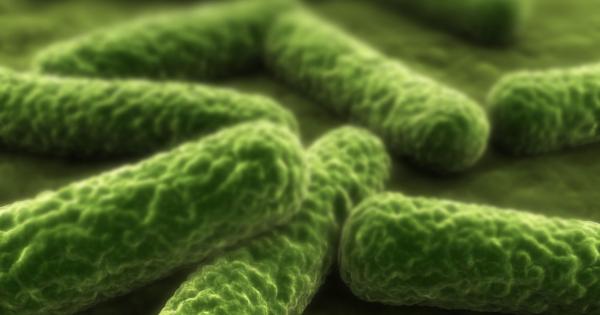“I scoffed at first. But I gave it a try. And within three days I thought I was going to die. …”
“This is my story, and why we started Headley Holistics. I was born in the 1960’s, by the time I was 17 I was diagnosed with my first autoimmune disease, Interstitial Cystitis.
What was surprising to me, was how I was treated. I was told by the medical establishment that my condition was psychological. This began a lifelong struggle of ‘what I was experiencing vs what doctors and my family judged I was experiencing’.
By the time I was 34 years old, I was diagnosed with my second autoimmune disease, severe Endometriosis. By this time, all of my organs were stuck together through adhesions. I was bleeding internally. I couldn’t keep food down, I had dangerously low blood pressure and I was chronically lightheaded.
But, because that first doctor believed my very real Interstitial Cystitis diagnosis was a female psychological issue, I was deemed a headcase, and that diagnosis followed me.
Over time I developed several more autoimmune disorders, and I accumulated thousands and thousands of dollars of prescription drugs every month.
I had countless and relentless surgeries, and by the time I was in my 50s, I couldn’t remember a time when I wasn’t sick or in pain.
But that all changed in 2014 when I was first introduced to Double Helix Water. I scoffed at first. But I gave it a try, and within three days, I thought I was going to die.
Every diagnosed condition I had was in hyper-overdrive. I was in so much agony, even my skin and my hair hurt.
This tiny little bottle of water had started a detox that my body desperately needed.
I had two choices. I could either throw this water out and go back to the way I was, or I could try cutting back the dose and weather the storm of detox and see what was on the other side.
So I decided to cut my dose back and forge ahead on this new path, and I decided that if I could make it through this detox, maybe there was hope on the other side.
I was totally shocked. We all were. And it took some time, but I gradually started to get better.
After about a year, I was able to start cutting back on some of the prescriptions that I had been on my whole life. I was told by many doctors that a couple of these drugs I would never get off of.
I was doing the impossible. Even the drugs they said I could never stop. I stopped.
Then I changed my diet. I added in other natural medicines. I was experiencing a state of health and wellbeing that I hadn’t felt in my whole life.”
We graciously received the more recent video above from Shelley after having found her testimonial on her website and asked if it be okay that we publish it. We got her permission and you may read it below. We are so honored and proud to be a part of her journey, these experiences are the reason we do what we do:
• After 40+ years of struggling with several autoimmune diseases, Shelley found relief from an unexpected source
• Interstitial cystitis, irritable bowel syndrome, endometriosis and fibromyalgia were all working in concert making Shelley’s life increasingly unbearable
• The endless carousel of pharmaceuticals offered little to no reprieve and increasingly higher costs
In early 2014, I was at the end of my rope. Diagnosed with interstitial cystitis in 1980, irritable bowel syndrome in 1991, endometriosis in 1993, and finally fibromyalgia in 2005, the constant pain and subsequent pharmaceuticals prescribed to me over the years had destroyed my life and all but suffocated any joy I could still muster up. My days were filled with pain and exhaustion, while my nights were agonizing and sleepless. I endured several pelvic surgeries over the years and I had been prescribed dozens of medications. Whatever new and amazing drugs big pharma could dream up to treat each of my diagnosed diseases were tried. Dozens of courses of antibiotics, muscle relaxers and specialty drugs allowed me to function during the day, while sleeping pills and antidepressants gave me what fitful slumber I could snatch at night. But it wasn’t until I entered into a pain contract with a respected pain management physician in Seattle that I finally gave up the Ibuprofen and wine that had, up until then, kept me functional despite the pain. My new doctor was aghast when I told him that I controlled my pain with 1,800 mg per day of Ibuprofen, followed up with a bottle of wine after work most days. The realization that this combination could eventually kill me was why I was convinced, at that point, that opioids were my next best option.
All this changed in 2014 when I was introduced to Double Helix Water. Even though I highly doubted that this tiny bottle of structured water molecules would do anything to ease my suffering, I decided to give it a try. I had tried everything else my doctors could think of, including acupuncture, that proved to be more painful than the diseases themselves, and craniosacral therapy that did bring me some level of relief, albeit temporary. In 2013, at my naturopath’s suggestion, I was even tested for food allergies. As it turned out I was allergic to everything I was eating, which at that point wasn’t much, so another diagnosis was added to the growing list of autoimmune diseases that were destroying my body and my life—leaky gut syndrome.
So I accepted the little bottle of Double Helix Water given to me in February 2014, and with an open mind began my journey back from hell to health. Two years of drinking Double Helix Water later, and I am feeling better than I have since I was 15 years old. At this point, all of my diagnosed diseases have faded and I am experiencing more energy than I’ve known in 40 years, blissful sleep, and a reduction in pain of about 95% most days. I’ve been able to wean myself off of most of the drugs I had come to depend on, even the opioids, and the approximately $1,500 per month spent on pharmaceuticals for over 15 years has fallen to less than $50 per month in just two years. In addition, after a short nine months of Double Helix Water consumption, my very nearsighted eyes—legally blind since I was a young child—changed from a visual acuity of between 20/300 and 20/400, to 20/50 and 20/100. My optometrist has told me that the changes in my vision are physically impossible, yet even he admits that it has happened. I have even caught myself, on several occasions, driving to town without glasses at all, which I could have never considered just nine short months earlier.
My body literally craves Double Helix Water now, and I find myself drinking another couple of ounces whenever I am feeling tired, stressed out from the day’s activities, or achy from inflammation or injury. Even our dogs and cats demand their Double Helix Water every day with simply amazing results. The power of Double Helix Water to remove toxins from our bodies on a daily basis, coupled with decreased inflammation and, subsequently, much lower levels of pain, is simply astonishing. Over 40 years of constant, incessant pain has vanished. Just as important, I am now eating foods that I wouldn’t have dreamt I would ever be able to eat again. This tiny bottle of structured water molecules has literally given me my life back and I am so incredibly thankful that I decided to give it a try before it was too late.”
— Shelley Headley







